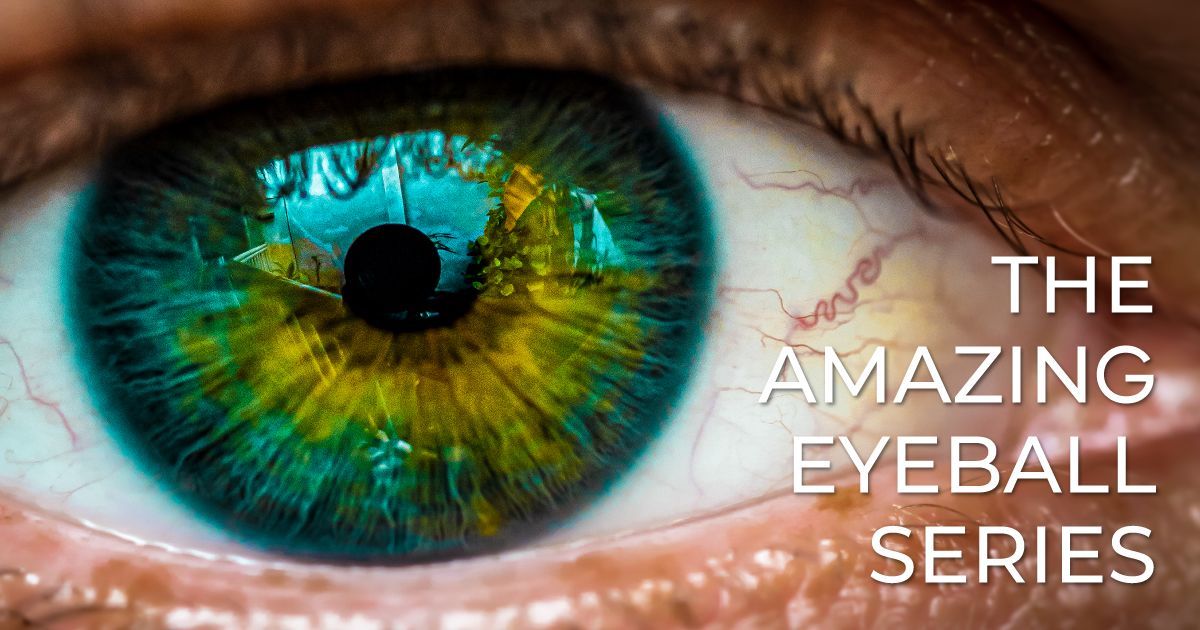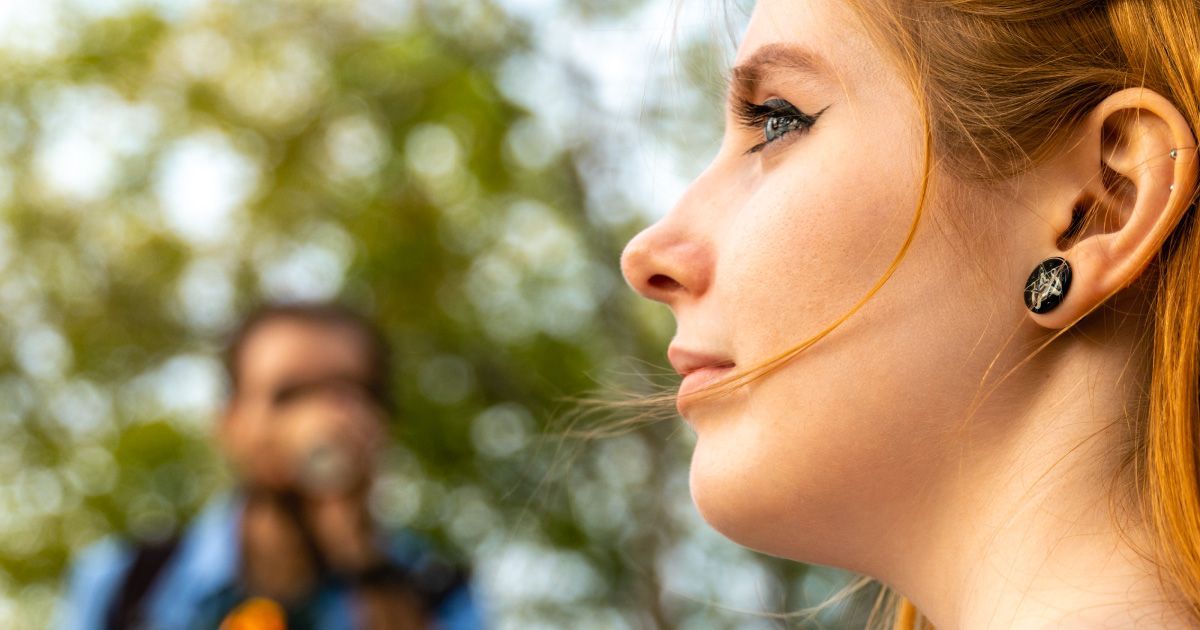The Amazing Eyeball: Part 4 - The Iris and Pupil

Welcome to The Amazing Eyeball, a comprehensive 10-part series exploring the intricate structures that make up one of the body’s most remarkable organs - the human eye. Each article in this series delves deep into the anatomy and function of different parts of the eye. Throughout the series, we’ll uncover how these structures work together to produce the miracle of sight, along with insights into common eye conditions, cutting-edge treatments, and the eye’s natural healing abilities. Whether you're fascinated by the eye's biology or eager to learn how to protect your vision, this series will take you on a journey through the wonders of the human eye.
The Iris and Pupil: The Dynamic Duo That Controls How Much Light Enters Your Eye
Read time: 7 minutes
The human eye is an amazing organ, constantly adjusting to changing light conditions, allowing us to see in a variety of environments. At the heart of this process are two key components: the iris and the pupil. Working together, these structures control how much light enters the eye, helping to protect delicate internal tissues and ensuring we can see clearly in both bright sunlight and dimly lit rooms.
In this article, we’ll take an in-depth look at the iris and pupil, how they work, their roles in vision, and common conditions that can affect them. This piece is part of our ongoing series exploring the makeup of the eyeball, and if you haven’t yet, be sure to check out our previous posts on the retina, cornea, and the aqueous and vitreous humor to see how all parts of the eye come together to produce vision.
What is the Iris?
The iris is the colored part of the eye, a ring-shaped structure located just behind the cornea. It’s most well-known for giving people their distinctive eye color, but it serves a much more important function. The primary job of the iris is to regulate the size of the pupil, controlling the amount of light that enters the eye.
The iris is made up of two types of muscles:
- Sphincter muscles: These muscles constrict the pupil, making it smaller in bright light.
- Dilator muscles: These muscles widen the pupil, allowing more light to enter in low-light conditions.
Together, these muscles work in harmony, adjusting the pupil’s size to maintain optimal light levels for vision. This ability to regulate light is what allows us to see well in a variety of lighting environments without overwhelming or under-stimulating the retina.
The Role of Eye Color
While the iris’ primary function is controlling light intake, it’s also responsible for the color of our eyes. Eye color is determined by the amount of pigment, or melanin, in the iris. People with brown eyes have a high concentration of melanin, while those with blue or green eyes have less. Interestingly, eye color can influence sensitivity to light:
- People with lighter-colored eyes (blue, green) tend to be more sensitive to bright light because they have less pigment to filter light.
- People with darker eyes (brown, hazel) tend to tolerate bright light better because the increased melanin absorbs more light.
The Pupil: The Adjustable Window to the Eye
The pupil is the black circular opening in the center of the iris. It’s the gateway through which light enters the eye, passing through the lens and reaching the retina at the back of the eye. Unlike the iris, the pupil itself has no color or structure—it simply expands or contracts based on the amount of light the iris allows through.
The size of the pupil is constantly adjusting to environmental light levels:
- In bright light, the pupil constricts to reduce the amount of light entering the eye, protecting the retina from damage and reducing glare.
- In dim light, the pupil dilates to allow more light to reach the retina, enhancing vision in low-light conditions.
This automatic adjustment is known as the pupillary light reflex, and it happens faster than we can consciously perceive. The reflex is controlled by the autonomic nervous system, meaning it functions involuntarily to protect the eye and optimize vision without requiring conscious thought.
How the Iris and Pupil Work Together
The relationship between the iris and pupil can be compared to a camera lens and its aperture. Just as a camera lens adjusts its aperture to control the amount of light that reaches the film or sensor, the iris adjusts the size of the pupil to regulate how much light enters the eye.
- When the
environment is too bright, the sphincter muscles of the iris contract, shrinking the pupil (a process known as miosis). This reduces the amount of light entering the eye, preventing glare and overexposure of the retina.
- Conversely, in low-light environments, the dilator muscles of the iris contract, causing the pupil to dilate (a process known as mydriasis). This increases the amount of light entering the eye, allowing for better vision in the dark.
This seamless adjustment happens automatically and continuously, ensuring that our eyes receive the optimal amount of light for clear and comfortable vision.
Common Conditions Affecting the Iris and Pupil
While the iris and pupil work efficiently most of the time, various conditions can disrupt their function and affect vision. Here are some common issues:
- Anisocoria: This condition occurs when the pupils are unequal in size. It can be a normal variation (physiological anisocoria), or it may indicate a problem with the eye’s nervous system, trauma, or other underlying conditions.
- Iritis: Inflammation of the iris, also known as anterior uveitis, can cause pain, redness, sensitivity to light, and blurred vision. Iritis can result from an injury, infection, or autoimmune disorder.
- Adie’s Pupil (Tonic Pupil): This is a neurological condition where one pupil is larger than normal and reacts slowly (if at all) to light. It is usually a benign condition but can affect near vision in the affected eye.
- Pupillary Block: This occurs when fluid behind the iris is unable to flow through the pupil, leading to increased intraocular pressure and potentially causing angle-closure glaucoma. This is a medical emergency and requires immediate attention.
- Mydriasis (Fixed Dilated Pupils): Pupils that remain dilated and unresponsive to light can result from trauma, medications, or nerve damage. In some cases, this may signal a serious underlying condition requiring prompt medical attention.
- Coloboma: This is a congenital defect where part of the iris is missing, leading to an irregularly shaped pupil. Coloboma can affect vision, especially in bright light, due to the inability of the pupil to constrict properly.
The Impact of Medications on Pupil Size
Certain medications can affect the size and function of the pupil. For example:
- Mydriatic drugs, often used during eye exams, temporarily dilate the pupil, allowing doctors to examine the retina and optic nerve.
- Opioids can cause miosis, or constricted pupils, by stimulating the parasympathetic nervous system.
- Stimulants, such as amphetamines or cocaine, can cause mydriasis, or dilated pupils, by stimulating the sympathetic nervous system.
It’s important to understand that changes in pupil size due to medication are usually temporary, and normal function typically resumes once the drug has worn off.
The Influence of Emotions on Pupil Dilation
Interestingly, the pupils not only respond to changes in light but also react to emotional stimuli. This is because the autonomic nervous system, which controls pupil size, is also responsible for managing our body’s response to emotional arousal.
For instance, when we experience strong emotions like excitement, attraction, or fear, our pupils may dilate as part of the body’s natural response. This phenomenon, known as emotional dilation, can occur even in normal lighting conditions and is often subtle.
How to Protect the Iris and Pupil
Although the iris and pupil are relatively robust structures, there are steps you can take to protect them from harm and ensure they continue to function properly:
- Wear Sunglasses: Prolonged exposure to UV rays can damage the delicate tissues of the iris and increase the risk of developing cataracts or macular degeneration. Wearing sunglasses that block 100% of UVA and UVB rays is an easy and effective way to protect your eyes.
- Get Regular Eye Exams: Comprehensive eye exams can detect early signs of conditions affecting the iris and pupil, such as glaucoma or iritis, and help prevent further complications.
- Use Eye Protection: If you work in environments with bright lights, lasers, or other potential hazards, wearing protective eyewear can shield your eyes from injury.
- Manage Systemic Conditions: Conditions like diabetes, high blood pressure, and autoimmune diseases can affect the eyes and may lead to complications involving the iris and pupil. Managing these conditions with proper medical care is crucial for maintaining eye health.
The Takeaway
The iris and pupil may be small, but their role in vision is enormous. Together, they control the amount of light entering the eye, adapting to various lighting conditions to ensure clear and comfortable vision. By understanding how these structures work and taking steps to protect them, you can help maintain healthy vision throughout your life.
In the next article in our series, we’ll explore the lens, the flexible structure inside the eye that fine-tunes focus and allows us to see objects clearly at different distances. Stay tuned as we continue our journey through the anatomy of the eyeball! anatomy of the eyeball!
Read the next article in this series: The Amazing Eyeball: Part 5 - The Lens
Share this blog post on social or with a friend:
The information provided in this article is intended for general knowledge and educational purposes only and should not be construed as medical advice. It is strongly recommended to consult with an eye care professional for personalized recommendations and guidance regarding your individual needs and eye health concerns.
All of Urban Optiks Optometry's blog posts and articles contain information carefully curated from openly sourced materials available in the public domain. We strive to ensure the accuracy and relevance of the information provided. For a comprehensive understanding of our practices and to read our full disclosure statement, please click here.


















